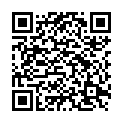|
|
|
| Module code: ABBG14 |
|
|
4V (4 hours per week) |
|
5 |
| Semester: 2 |
| Mandatory course: yes |
Language of instruction:
German |
Assessment:
Written exam (120 minutes)
[updated 01.10.2020]
|
Exam recurrence:
The information regarding exam recurrence is found within the exam policy of the study programme (ASPO).
|
ABBG14 (P410-0031) Aviation Business (Basic), Bachelor, ASPO 01.10.2015
, semester 4, mandatory course
ABBG14 (P410-0031) Aviation Business (Basic), Bachelor, ASPO 01.10.2018
, semester 2, mandatory course
|
60 class hours (= 45 clock hours) over a 15-week period.
The total student study time is 150 hours (equivalent to 5 ECTS credits).
There are therefore 105 hours available for class preparation and follow-up work and exam preparation.
|
Recommended prerequisites (modules):
ABBG11 Mathematics
ABBG13 Material Science & Physics
[updated 05.11.2021]
|
Recommended as prerequisite for:
ABBG15 Airline Maintanance Management
[updated 05.11.2021]
|
Module coordinator:
Prof. Dr. Dirk Hübner |
Lecturer:
Prof. Dr. Dirk Hübner
[updated 05.11.2021]
|
Learning outcomes:
Measurement:
After successfully completing this part of the module, students will be able to explain the physical principles on which measurements are based. They will be able to describe the technical implementation of these physical relationships of the most important measurement methods in aviation. Students will also be able to describe how a measurement result is obtained and explain possible measurement errors. To do this, students will first learn to classify the basic terms of measurement technology and develop an understanding of the actual measurement process. After this, students will be introduced to the problem of measurement errors (including possible causes) and estimating errors of indirectly measured quantities using the theory of Gaussian error propagation (e.g. determining density using the ideal gas equation, determining velocity using the Bernoulli equation, etc.). Furthermore, students will learn to evaluate measuring equipment with the help of statistical methods. Based on the assumption of a normally distributed population, mean value and standard deviation serve this purpose. Subsequently, students will learn about possible conversion principles and the measuring devices derived from them for physical quantities relevant in aviation and aero-/thermodynamics and will thus, be able to evaluate the respective conversion principles with regard to their applicability and significance. The latter includes the technical correlations and application of these in case studies (e.g. calculating a temperature increase from the measured thermoelectric voltage).
Engines:
After successfully completing this part of the module, students will be able to describe and classify the different conventional propulsion systems used in aircrafts (especially commercial aircrafts). Furthermore, they will be able to explain the function and mode of operation of turbojet engines and their components. In addition, they will be able to characterize individual engines by means of various key figures (unit mass, specific thrust, specific fuel consumption, propulsion efficiency, etc.). They will be familiar with the physical principles and will be able to explain them with the help of thermodynamic relationships (e.g. ideal gas equation, conservation laws, cyclic processes). Based on this knowledge, students will be able to formulate the requirements for aircraft engines, e.g. with regard to pollutant emissions, fuel consumption and noise development. Finally, students will be able to illustrate which future technologies can be used to meet these requirements.
Airframe:
After successfully completing this part of the module, students will be familiar with the main design groups of an aircraft and will be able to describe them. They will also be able to differentiate between construction methods, types of construction, construction principles and be able to give examples. On the basis of simple examples, students will be able to identify geometric and material parameters that influence the level of stress in the individual construction groups of the airframe. Using the airframe structure of the A300B2 and B4, students will apply what they have learned and deepen their knowledge in a case study on the A318/A319/A320/A321.
[updated 01.10.2020]
|
Module content:
Measurement:
- Basics of analog and digital measurement technology, measurement errors
- Measuring temperatures (thermocouples, resistance thermometers, pyrometers)
- Measuring mechanical quantities (force, pressure, acceleration/vibration, position, speed, rotational speed)
Engines:
- Introduction to the propulsion technology of commercial aircraft, overview of conventional processes, components
- Physical basics / principle of jet propulsion, thermodynamic basics, state variables and changes,
theoretical background of thrust generation
- Derivation of some key figures (unit mass, specific thrust, specific fuel consumption, propulsion efficiency, etc.) to characterize and evaluate engines
Airframe technology:
- Main design groups, design groups, airframe
- Construction methods, types of construction, construction principles, stress
- Cell structure based on the example of the A300B2 and B4
- Analysis of the airframe structure A318/A319/A320/A321 by AMM
[updated 01.10.2020]
|
Teaching methods/Media:
Lecture/presentatio with integrated tutorial, blackboard, copies, printouts
[updated 01.10.2020]
|
Recommended or required reading:
Measurement:
- Messtechnik für Ingenieure und Praktiker, Zimmermann/Ortwig, Shaker Verlag, 2009, ISBN 978-3-8322-8232-5
- Strömungsmesstechnik, Nitsche/Brunn, Springer Verlag, 2006, ISBN_10 3-540-20990-5
- Das Ingenieurwissen Messtechnik, Tränkler/Fischerauer, Springer Vieweg, 2014, ISBN 978-3-662-44029-2
Engines:
- Flugzeugtriebwerke, Bräunling, Springer Verlag, 2009, ISBN 978-3-540-76368-0
- Gasturbinen und Flugantriebe, Rick, Springer Vieweg, 2013, ISBN 978-3-540-79445-5
- Verdichter für Turbo-Flugtriebwerke, Grieb, Springer Verlag, 2009, ISBN 978-3-540-79445-5
Airframe technology:
- Impulsgeber Luftfahrt, Hinsch, Springer Vieweg, 2013, ISBN 978-3-642-32668-4
- Handbuch der Luftfahrt, Mensen, Springer Vieweg, 2013, ISBN 978-3-642-34401-5
- AMM A318/319/A320/A321, Air France, 1987, Chapter 52, 52, 53,5, 56, 57 (PDF)
- Zellstruktur der Airbusse A300B1 und B4, Lufthansa Technische Schule, 1988 (PDF)
[updated 01.10.2020]
|


